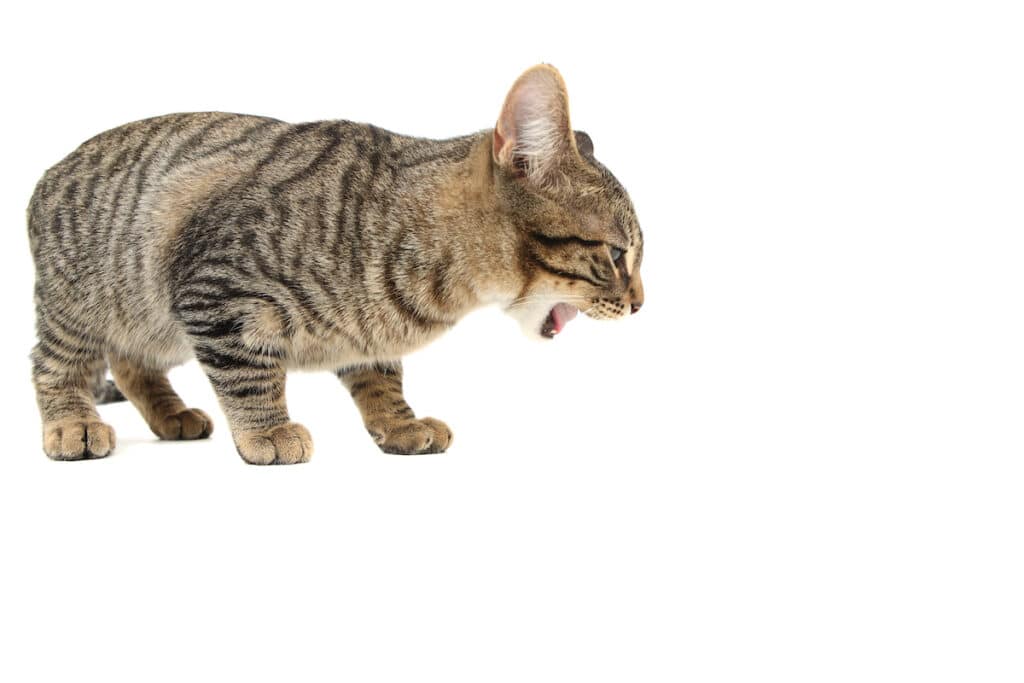Why Cats Have Hairballs
Hairballs are something that happens to cats when they clean themselves. They swallow some of their shed hair because their tongue has tiny backwards projections that push the hair down their throat. In other words, cats have rough tongues that catches the hair. Most of the hair eventually leaves their body in the toilet, but some remains in their stomach and turns into a wet clump – which we know as a hairball.
As Dr. Guglielmino explains, kittens and young cats are less likely to develop hairballs than older cats that spend a lot of time licking their coats. Some cats naturally groom themselves more than others, and long-haired breeds like Persians and Maine Coons are at greater risk than short-haired breeds. Hairballs happen more often in seasons when cats shed their coats.
More Than You Ever Wanted To Know About Hairballs
A trichobezoar is a wad of hair that cats can’t digest, also known as a hairball. It comes out of the stomach and looks like a cigar or sausage.
A hairball may look like poop at first, but if you take a closer look and smell it, you’ll notice that it’s not as bad as poop. Additionally, the hairball is likely to be the same color as your cat’s fur.
The size of a regurgitated hairball can differ. On average, they are about one inch in length, but some have been recorded to be five inches long and an inch thick.
When To Be Concerned About a Cat’s Hairballs
If your cat vomit hairballs once a week or two, don’t worry. But if your cat doesn’t want to eat for more than 24 hours, is tired all the time, or keeps trying to throw up but nothing comes out, take them to the vet right away.
There are two possible explanations for why your cat is hacking: either they have regurgitated a hairball that is now blocking their digestive tract, or they could be suffering from a severe respiratory ailment like asthma. If the latter is true, they will need emergency treatment right away.
Dr. Guglielmono says that you need to do more than one thing to figure out if an animal has an intestinal blockage. You need to examine the animal, do some bloodwork, and take X-rays. You also need to know the animal’s history of regurgitating hairballs. If you do all of this, you might be able to tell if the animal has a blockage. If so, the only way to remove the hairball might be through surgery.
Therapy for this condition usually involves protecting the intestine over several days. This includes rehydration and using a laxative to help move the hairball through the digestive system. According to Dr. Guglielmanino, this type of care typically costs $300-$400.
Reducing the Risk of Hairballs in Cats
Dr. Guglielmino recommends doing the following things to help stop hairballs and any problems they might cause:
- Try to brush and comb your cat every day.
- If the animal will not let you, take her to the veterinarian or a person who knows how to cut hair once or twice a year. This works especially well on animals with long hair.
- Don’t let your cat’s hairballs get the best of her – give her a hairball remedy once or twice a week. These remedies, usually petroleum-based laxatives, will help keep her fur looking healthy and lovely.
Moreover, she states to keep your home’s floors free of debris such as thread, paper clips, wrappers, and other items that could cause a hairball if ingested.














